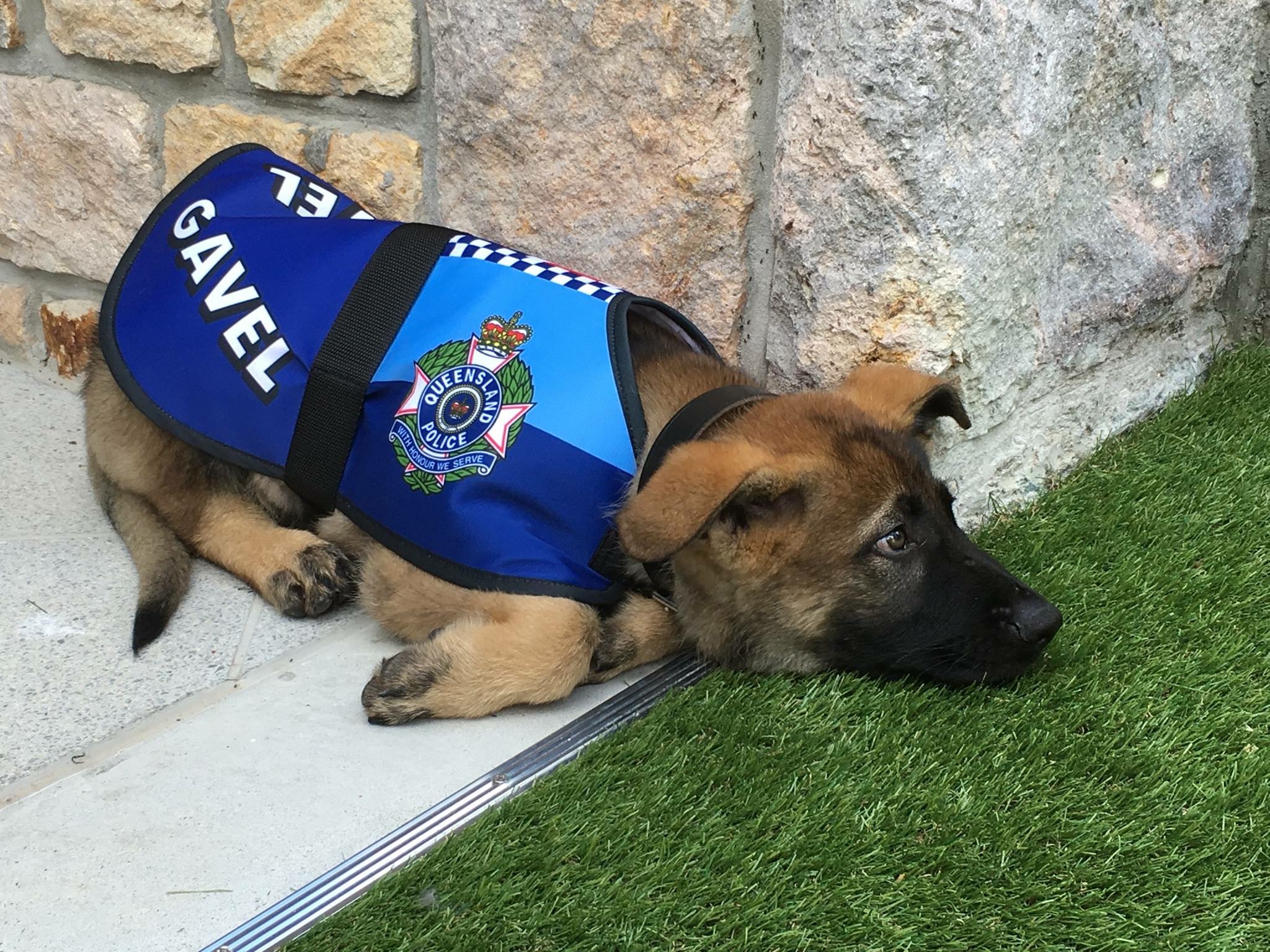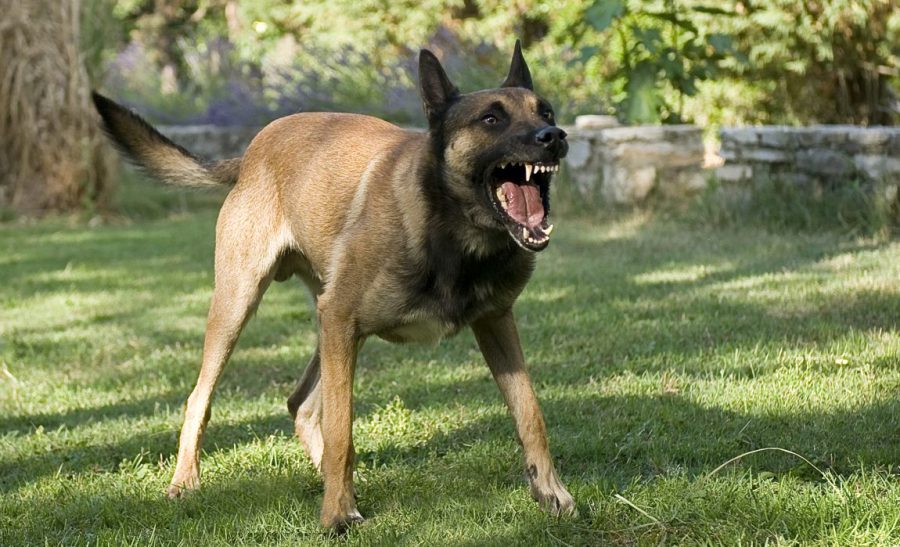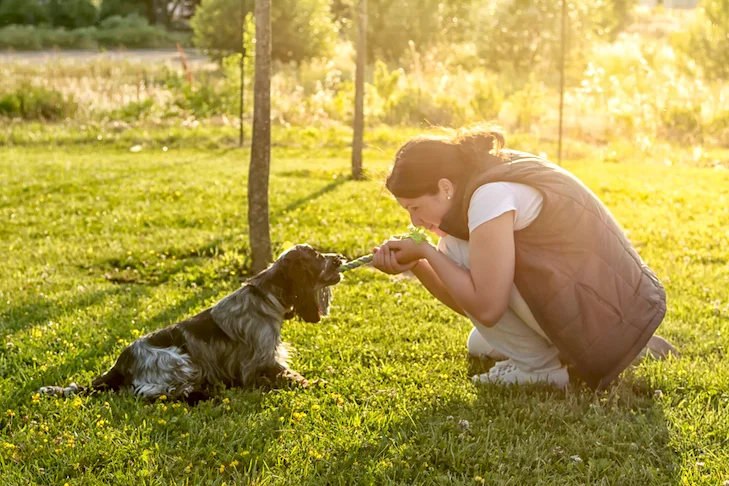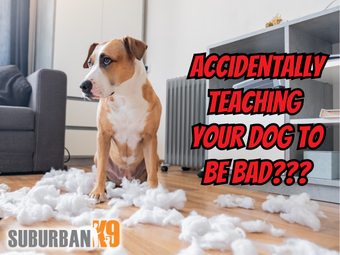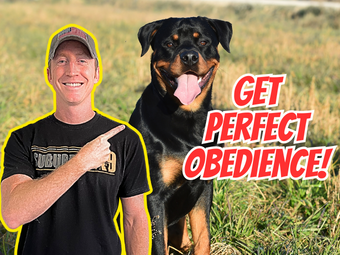Why do dogs guard the house?
Dogs have a natural instinct to protect their territory and the members of their pack! In the case of a family dog, the house and the people who live in it become their pack and their home turf. On top of that, this is a behavior that was encouraged for thousands of years while humanity bred wolves into the canines we love today. Therefore, when dogs guard the house, they are simply following their natural and reinforced instincts to protect their pack and territory.
Dogs also have a strong sense of smell and hearing, which makes them excellent at detecting intruders or unusual activity around the house. This heightened sense of awareness can make them act more alert and protective, even if the perceived threat is just a stranger passing by or something innocuous like the wind blowing some leaves.
In some cases, dogs are trained specifically to guard the house or property. Breeds such as German Shepherds, Rottweilers, and Dobermans are often used as guard dogs because of their intelligence, loyalty, and protective instincts. These dogs are trained to recognize and respond to potential threats, such as burglars or intruders, and to protect their territory and pack.
Is guarding the house an appropriate behavior?
Whether or not guarding the house is appropriate behavior for a dog depends on the individual situation and the dog's behavior. In some cases, such as when a dog is trained to be a guard dog, it is appropriate for them to guard the house and protect their pack.
However, if a dog is overly aggressive towards strangers or shows signs of fear or anxiety, their behavior may be inappropriate and could pose a danger to others. It's important for dog owners to properly socialize their dogs and teach them how to behave around strangers and in different situations.
In general, if a dog's guarding behavior is causing fear or discomfort to others, it may be necessary for the owner to seek professional training or behavior modification to address the issue. Dogs can be trained to appropriately guard their home and alert their owners to potential threats without becoming overly aggressive or causing harm to others.
Also, if your dog shows too much of a guarding tendency they may provide less protection than you think. Many potential clients call us with dogs that are so out of control that they need to be put in a crate or separate room when the owner answers the door. How much can they protect the family if they are locked up when you are talking to a stranger at your door? This is when you are at your most vulnerable and you need a well trained dog that can be at your side during this time.
What breeds of dogs display guarding behavior?
Here's the list of 10 breeds known to have guarding issues with strangers
- German Shepherd
- Rottweiler
- Doberman Pinscher
- Bullmastiff
- Boxer
- Akita
- Great Dane
- Cane Corso
- Belgian Malinois
- American Staffordshire Terrier
It's important to note that while these breeds have a natural inclination towards guarding, not every dog of these breeds will exhibit this behavior. It's also entirely possible for dogs not of these breeds to display these behaviors. Over the years Suburban K9 has worked with plenty of aggressive Labrador Retrievers, Golden Retrievers and Doodles! The dog's breed, training, socialization, and individual temperament can all influence a dog's behavior.

These calming chews have great reviews for decreasing a dog's overall anxiety. They are made in the USA with high quality ingredients. Reviewers suggest that they have used them to help with everything from stress with loud noises, barking at storms, and trips to the vet.
Should I train my dog to guard the house?
Training your dog to guard your house can have its benefits, such as increased security and protection for your property and family. However, it is important to consider the potential drawbacks as well.
The first thing to consider is that not all dogs are suitable for guarding. Some breeds are more predisposed to guarding behavior, such as German Shepherds and Rottweilers, while others may not be as effective or may not have the right temperament for guarding. You can even have a dog that is considered a guarding breed, and they still don't have the temperament for it, like Gavel the German Shepard.
Additionally, training a dog to guard can be a lengthy and challenging process, requiring significant time and effort from the owner. It is important to ensure that the training is done properly and with the guidance of a professional dog trainer. We will help clients train their dogs to be responsive to commands and to listen appropriately in a situation when they want to guard, but we do not teach dogs how to bite or show aggression to humans. This is some of the only training that Suburban K9 does not offer.
Another consideration is the potential liability that comes with having a guard dog. If your dog were to bite or attack someone, you could be held liable for any injuries or damages caused. When you take steps to teach your dog to bite, it is going to increase the likelihood that they bite someone they shouldn't.
Ultimately, the decision to train your dog to guard your house should be based on your specific circumstances and needs. It is important to weigh the potential benefits and drawbacks and to seek professional advice before making a decision.
How do I deal with territorial dogs?
Territorial behavior in dogs can be challenging to deal with, but there are some steps you can take to address the issue:
- Identify the trigger: Try to identify the specific triggers that cause your dog to exhibit territorial behavior, such as strangers approaching the house or other dogs in the area. Once you have identified the trigger, you can take steps to manage the situation.
- Socialization: Like discussed earlier, expose your dog to different people, animals, and environments to help them develop positive associations with new experiences.
- Correct the rude behavior: Let to dog know if it's acting inappropriate with a correction, and then work to calm to the dog down around the trigger
- Reward the good behavior: praise your dog if they listen and do as you say despite the trigger being present
- Consistency: Be consistent in your training and behavior management. Set clear boundaries and rules for your dog and enforce them consistently.
- Professional help: Consider seeking the assistance of a professional dog trainer or behaviorist if your dog's territorial behavior is severe or persistent. They can provide personalized training and behavior modification techniques to help address the issue. We would always recommend In-Home Training for a dog where you want to work on Guarding.
Remember, it is important to approach the issue with patience, understanding, and always have the goal of trying to calm your dog down.
How do I stop a dog from guarding the house?
The answer to this depends on what your definition of "guarding the house" is. If this involves actual aggression where the dog will charge at strangers entering the property, it will be a different and more intensive training process than a dog that sounds mean when someone knocks at the door but is friendly once they meet them. If aggression is part of your problem you will need an approach that incorporates a lot of obedience work to tire and calm the dog down, daily practice calming down from reactive triggers, and training sessions focused on socialization with strangers both on and off your property. This type of problem will almost always require the guidance of an experienced dog trainer.
If your problem is just an overly excited dog that is barking too loud, this will be more easily addressable with daily obedience work and training exercises that teach proper behaviors when visitors are present.
What Tools Do I Need to Work on Guarding?
The tools for working on guarding are an important factor to ensure the safety of everyone involved in the process, even your pup! These tools should help you ensure that you are getting the right start!
Leashes
The first item that we would recommend is a quality leather leash with a strong clasp. The leash is the most important way to have control over your dog when working on the guarding behavior. A weak leash or a leash that doesn't provide control will not be helpful and could lead to injury of guests to your house, yourself, or your dog. For this reason, we always recommend a standard 6-foot leash as opposed to any type of retractable or stretchy leash. Leather tends to be the most comfortable in your hands as a handler and is very reliable against a dog pulling. We would also recommend an item called a short tab. This is a short leash that can be used to progress with your dog towards being off leash and controlled around the home.
- REAL GENUINE LEATHER dog training leash is real Italian imported leather, assembled and accomplished in China.
- METAL CLIPS Using pure copper alloy casting, the high quality plating process, outstanding clip appearance
- MILITARY GRADE TRAINING Law enforcement and military grade of professional training.
- CONVENIENT AND COMFORTABLE 5.6ft length let you and your dog in your backyard or walking down the street has become more relaxed
- WARRANTIES SERVICE If you have any problem of these dog leashes, don't hesitate to contact with us.
- New design short dog leash padded handle
- 100% genuine leather sew by hand
- Width: 2/5 inches Length: 9 inches Weight: 150g
- Adjustable between the rustproof hook and the lead
- Very comfortable soft leash handle for dog show, patrolling, walking
As we mentioned, a short tab is a great tool for transitioning from working with your dog on leash to allowing them to have the freedom of not being on leash. The short tab makes them feel free because they aren't dragging some long leash around and having it hit their legs. You still however have something to grab and use for control. This option is a great match for the leather leash that we recommended.
Muzzles
If your dog really struggles with having people over to the home, you might want to consider adding a muzzle to your training routine. Many people tend to avoid them because they think it will make guests more scared of their dog. This really isn't the best thought process though. The muzzle will provide an amount of safety for your guests and allow them to interact more with your dog. This is beneficial for both the dog and your guest. You will want to make sure that you properly fit your muzzle to your dog and work with them to ensure they are comfortable wearing it before working with on the guarding behavior. This will make sure that you are set up for success moving forward.
- DOGS CAN PANT AND DRINK: The Baskerville Ultra Muzzle PATENTED HUMANE DESIGN allows dogs to pant (when hot or stressed) and drink. SUITABLE FOR DAILY WALKS and longer periods of wear.
- SHAPE FOR CUSTOM FIT: Like a mouth-guard, the Ultra Muzzle can be HEAT SHAPED using warm water to fit DIFFERENT DOG NOSE SHAPES. See fitting guide for more info and to find the BEST SIZE for your dog.
- IDEAL FOR REACTIVE DOGS: you can TRAIN and REWARD treat your dog if they are reactive around other dogs, people or in new situations like the vet.
- STRONG & SAFE: Built with strong Thermo Plastic Rubber (TPR) the Ultra Muzzle is SAFE TO PREVENT BITES. Extra secure with LOCKABLE NECK STRAP CLIP, HEADSTRAP and COLLAR ATTACHMENT if needed.
- COMFORTABLE FIT: Comes in 6 sizes with PADDED STRAPS and NO METAL WORK ON DOGS FACE. Great for dog owners looking for SMALL, MEDIUM or LARGE sized dog muzzles.
- ADJUSTABLE SIZE: The adjustable strap connecting to the neck help to keep the dog muzzle securely in place, ensuring it is snug and anti-slipped.
- COMFORTABLE AND BREATHABLE: The dog muzzle practical and reliable is made with high-quality nylon material, soft breathable mesh and soft fabric.
- UPGRADE HUMANIZED DESIGN: The humane design solves the inconvenience of traditional dog muzzle that can't drink water,
- EASY TO WEAR AND CLEAN: The ergonomic design of the dog muzzle ensures that the mask stays securely in place.
- RISK FREE CUSTOMER SERVICE: Please measure the right size before buying and we have provided a chart and measuring instructions
What about when my dog is guarding his dog bed or crate from me?
This sounds like a case of resource guarding as opposed to guarding the house. It may seem like semantics when at the end of the day the dog may be acting aggressive in either case. We consider resource guarding to be a different issue than guarding the house, but there are a lot of similarities. Both of these issues arise from a dog taking ownership of something and being willing to tell a human to “stay away.”
What is Resource Guarding?
Resource guarding is a behavior in dogs where they become protective of a resource, such as: food, toys, bed, or even their owners. Really it can be anything a dog sees that is of high enough value to them. We've seen a Golden Doodle that would get vicious when it stole used tissues from the trash! When a dog is resource guarding, they may growl, snap, or bite if someone tries to take away the resource they are guarding.
The warning signs of a dog who is actively resource guarding include:
- Lip curl or showing teeth
- Growling
- Stiffening or freezing
- Hackles standing up (Hair along the spine)
- "Whale Eye" Dogs eyes are open wide and staring at you while facing away
This will culminate with the dog snapping and even biting if pushed too far.
It's important for dog owners to understand and recognize the signs of resource guarding, as it can be managed and even prevented with proper training and management. Effective training techniques can be used to teach a dog that giving up resources is not a threat and can even result in positive outcomes, like praise. It's also important for dog owners to avoid situations that may trigger resource guarding and to seek professional help if the behavior is severe or dangerous.
Is Socialization helpful to avoid resource guarding?
Socializing a dog is an important aspect of preventing resource guarding. If you have a young puppy it is important to expose them to different people, animals, and environments in a positive and controlled manner during their critical socialization period, which is between 5 and 16 weeks of age. After that it can be more difficult, but not a lost cause. According to the AKC, beginning obedience training at a young age can also help prevent resource guarding from developing.
Here's how socialization can help prevent resource guarding:
- Reduces fear and anxiety: Dogs that are not properly socialized may develop fear and anxiety towards new people or situations, which can trigger resource guarding behavior. By exposing a puppy to different people and environments during their critical socialization period, they learn to feel more comfortable and confident in new situations.
- Encourages positive interactions: Socializing a puppy helps them learn how to interact with different types of people and animals in a positive way, which can reduce the likelihood of resource guarding behavior.
- Teaches impulse control: Socialization teaches a puppy to control their impulses and respond to cues, which can help prevent resource guarding. For example, teaching a puppy to "leave it" when they are about to grab a toy or treat can help get them used to listening to you despite wanting something different.
- Promotes sharing: By exposing a puppy to other dogs and animals, they learn to share resources such as toys and food, which can help prevent resource guarding towards other animals.
- Builds trust: Socialization helps build trust between a puppy and their owner, which can prevent resource guarding towards their owner. A puppy that trusts their owner is less likely to feel the need to guard their resources from them.
Remember, socialization is an ongoing process that should continue throughout a dog's life to ensure that they remain well-adjusted and well-behaved. If you notice signs of resource guarding in your dog please reach out to us for help to address the issue before it becomes a bigger problem.
What do I do when my dog steals and guards something?
You have a few choices when confronted with this situation and you're caught unprepared
- Bribery: Give the dog a treat or something else and trade for the object it's guarding if it needs to be taken away.
- Go for a walk: In a positive tone of voice ask the dog if they want to go for a walk! If this snaps them out of the behavior and makes them cooperative great! If not no worries. If they are not leashed, carefully slip lead the dog and then slowly start walking away and give short tugs on the leash until the dog starts walking. Most dogs will eventually get tired and drop the object after enough time
- Give up: Not what you thought you'd hear from the dog trainer? Sometimes it might just be best to let the dog win this round. Did they snag a pig ear from the bin at the pet store? Do you want to fight with the dog or just pay for it quickly and leave letting them have the treat? This is not a training technique, it's just a matter of picking your battles.
It's important to note that these tactics will not help fix the problem of resource guarding, and if employed often enough might possibly exacerbate the issue. To teach a dog not to resource guard you really need effective training from an experienced dog trainer, reach out for a quote today.
How do I correct resource guarding?
This is a very controversial topic. At Suburban K9 we generally take a balanced approach to training where we use positive reinforcement in conjunction with positive punishment in order to encourage or discourage behaviors. There are trainers out there that practice purely positive reinforcement where they only praise good behavior and hope the bad goes away, and then there's more dominance based trainers and some may even use more heavy handed techniques.
What we think most people agree on is that what you're doing should not be causing your dog to become afraid of you. Our goal is always working towards calming the dog down. Regardless of your training methodology, the more respect they have for you and the more obedience work they've done that day will help make the situation manageable and fixable.
Contact a Professional Trainer skilled in Resource Guarding
We of course think that you should reach out to us for help with Resource Guarding, but incase we are not in your area or you go a different path for other reasons, there are three things we recommend you ask perspective trainers:
- Do you have experience working with aggressive dogs?
- Are you insured to work with aggressive dogs?
- What experience do you have with resource guarding?
Restrict access to items that they resource guard
The first step once you've discovered your dog is willing to guard resources is to go through your home and remove or restrict free access those resources. Dogs are good at stealing socks or garbage when you're most distracted and unprepared to intervene. If your dog can not get to the resource, there will be nothing to guard!
This however is only a temporary solution, don't take items away and just ignore the problem hoping that by not having the resource the dog will never show this behavior again. Resource guarding tends to spread from one thing to others if left unchecked.

A reasonably priced plastic slow feeder bowl. Available in three sizes. Slows down your dogs feeding and keeps the food in a bowl. Unlike the Kong wobbler which leaves food all over the floor!
Plan training sessions to work with the items
Here is the tricky part. We need to create exercises to work with the dog while it has a resource, but do it in a manner that is safe for everyone involved. Ideally you want a decent amount of space to give you room to work with the dog, and starting out we are going to want the dog on leash to give us some level of control.
Our techniques incorporate positive reinforcement, and positive punishment as warranted, while trying to calm the dog down. Whatever exercise you employ, it should be attempting to accomplish three things:
- Calm the dog down: Teach the dog that it does not need to get worried when it has something of value
- Devalue the Resource: Show the dog that just because something gets taken away, it doesn't mean it will never get to have it again (only relevant when the resource is something the dog is allowed to have)
- Reward for relinquishing: If you tell the dog to drop it, or reach for the resource and they readily give it to you, reward them! This is exactly what we've been working towards and we want to encourage the behavior every time it happens
Once your dog is consistently allowing you to take the resource and no longer showing signs of guarding, you will need to work through these exercises again with no leash on. Only once your dog consistently shows no signs of resource guarding with no leash on do we feel like we can begin to trust the dog again.
Slowly integrate the items back into daily life
At this point, you can slowly begin to add the items that caused the issues back to everyday life. Be cautious of situations where your dog is more excited than normal when you try to interact with them while they have their resource of choice. Also be aware that just because your dog is no longer guarding things from you or your family, they could possible display resource guarding behaviors to others. Other dogs and children may sometimes be targets to guard against even if adults are not. Just remember to take things slow and always think if the dog has done enough to earn your trust back when taking them into new environments or bringing visitors into your home.
In conclusion, whether your dog guards the house or guards resources from people within the house, this is a major problem but it is fixable! Come up with a plan and bring in an experienced trainer when needed. We have a lot of experience helping clients address resource guarding and improper guarding the house behaviors and we would love to help you as well!




